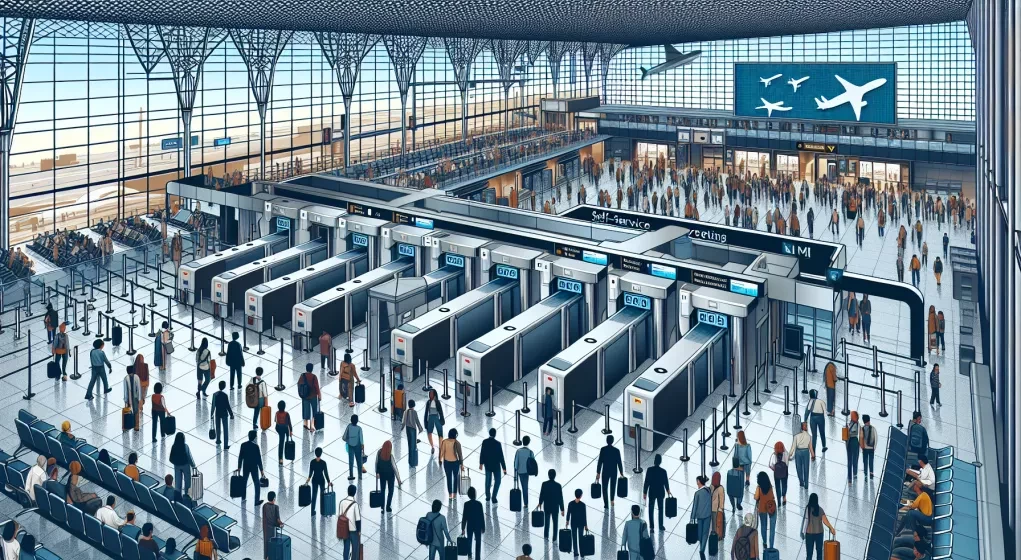In the ever-evolving tableau of American air travel, the latest brushstroke by the Transportation Security Administration (TSA) is poised to redefine the narrative for jet-setters nationwide. The TSA, in conjunction with the Department of Homeland Security (DHS), is on the brink of ushering in a new epoch with the introduction of a self-service screening innovation. The harbinger of this transformation is the PAX MX2 self-screening system, destined to debut for TSA PreCheck passengers at the illustrious Las Vegas Airport come the fresh canvas of January.
The masterwork, entitled the Screening at Speed Program and sculpted by the astute minds at the Science and Technology Directorate (S&T), will commence its national overture at the bustling Harry Reid Airport in Las Vegas. Foretelling a dramatic re-imagination of the airport security experience, the narrative for travelers and Transportation Security Officers (TSOs) alike is on the cusp of a significant arc shift — Christina Peach, a venerable branch manager for the TSA’s Innovation Task Force, heralded an auspicious future in a recent DHS missive.
A privilege initially extended to the elect of the TSA’s Trusted Traveler Program, including those enlisted in TSA PreCheck, this experience is akin to a backstage pass to an exclusive journey through airport security.
In the spirit of autonomy, the novel PAX MX2 system entrusts Trusted Travelers with the reins, offering an opportunity to traverse the TSA checkpoint landscape at a tailored cadence, seamlessly minimalizing the once ubiquitous corporeal interactions between officers and passengers.
Envision placing one’s belongings on the immutable conveyor belt, only now, the passenger is guided by a digital oracle—a video monitor that communicates detailed directives while a simple push of a button beckons a live security sentinel in the event of a quandary.
Pioneering further, travelers will cross through a transformative portal, complete with automated ingress and egress doors which remain sentinels unto themselves, parting only once the passenger has been deemed clear by the guard of technology.
John Fortune, a steward of the program, likens the system to the flourishing self-ordering kiosks that grace our culinary establishments—from the swift service of fast-food to the more measured pace of sit-down eateries.
The year 2021 marked an auspicious moment as S&T awarded contracts to a triad of companies, with Vanderlande Industries Inc. of Marietta, Ga., assuming the mantle to craft the PAX MX2 prototype that now awaits the anticipatory souls in Las Vegas.
Amidst tales of anticipation, the DHS narrative extolls the promise of heightened efficiency with fewer pat-downs and baggage inspections by TSA officers. Yet in this future-rich fresco, one cannot help but ponder the silhouette of automation against the backdrop of human roles within TSA, and whether this innovation may cast a shadow on the populace of TSA staff, propelling each remaining sentinel to embrace an era of doing more with less.






